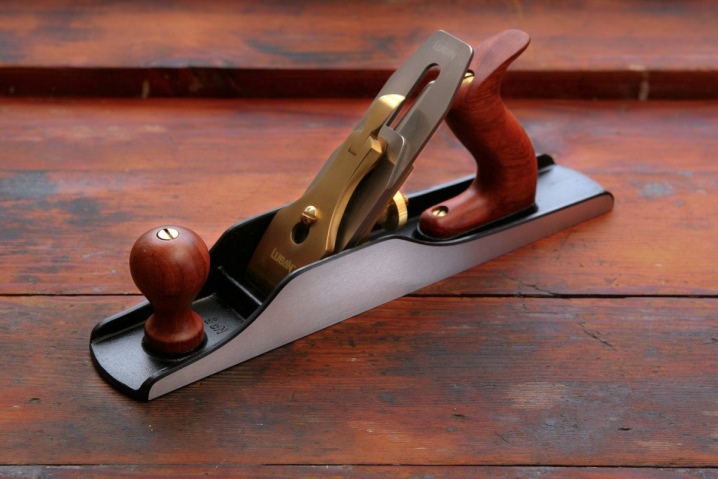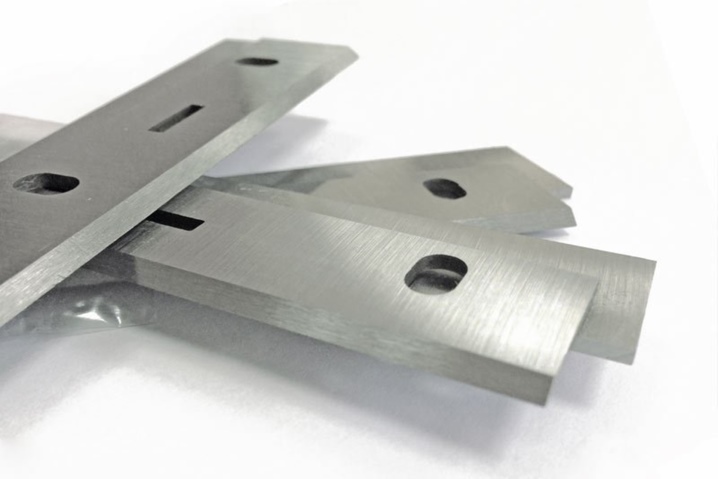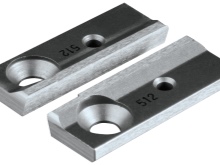Planer knives: description of types and sharpening

The plane is a popular tool in the arsenal of a home craftsman who loves to do carpentry. Knives are one of the most important components of the plane. It is worth figuring out what kind of blades are and how to sharpen them correctly in order to extend the life of the tool.

Features and design
As you know, with the help of a planer, they perform rough and final finishing of wood structures and surfaces. Today, the classic hand planers have been replaced by electrical equipment. The principle of operation of both tools is the same. The plane removes a layer of wood due to the blades provided in the design. The procedure is called planing. The knife has a special sharpening, and the element is located at a certain angle, which allows you to achieve the desired result.
The plane's knife is an inconspicuous, but at the same time, an important piece of equipment. The steel blade plays a decisive role in the operation of the tool and allows you to obtain the required shape of the machined surface.

Knife designs include such elements.
- Chamfer. It can be found from the back of the blade. With its help, it is possible to reduce the force of penetration of the knife into the tree.
- Front corner... Its position coincides with the angle of inclination of the knife, which is located in the tool body.
- Working angle of taper. It has its own value, which is determined by subtracting the chamfer angle and the slope angle.

The rake angle is considered the most important. It influences the smoothness of the treated wood surface. Also, the rake angle is responsible for the load on the blade and the conditions for removing the chips formed during operation.

Species overview
Depending on the quality of the planer knives, it is determined tool speed, and the final result.
Also blade type affects the way the surface is treated and the shape that can be obtained at the end of the work. Manufacturers of machine tools produce several types of planers, each of which differs mainly in the type of blade provided in the design.

If we classify planers by the method of surface treatment, then there are the following types of knives.
Direct
With their help, it is possible to process small-sized workpieces. If you wish, you can choose a quarter to carry out the necessary work. The blades are classic straight and angled to create the desired result.

Rounded
They are in demand for the treatment of large-width surfaces. Such blades are used when it is necessary to organize a neat and smooth transition between the planing planes.

Curly
This category includes planers, knives of which allow you to achieve complex geometric shapes when processing a wooden surface. Structurally, the blades resemble the knives of classic planers, however, they have a number of features. By using curly knives, a wavy surface is created, an imitation of "aged" wood is performed. To determine a suitable knife manufacturers use special markings, which can be found on the surface. Thus, when buying a blade, you will be able to quickly select the appropriate option.

Spiral
Provide the most accurate cut. They are installed mainly in light models of planers, which are distinguished by their ease of use.The advantage is the ability to adjust the planing depth. The knives built into the structure of woodworking equipment differ not only in the shape of the surface sharpening, but also in a number of other parameters.

Materials (edit)
As the main material for the manufacture of blades, manufacturers use:
- steel;
- Wolfram carbide.

Carbide compounds allow you to achieve high strength and durability of the product. Steel knives can be used several times, and tungsten are able to process even the toughest surface. However, the disadvantage of the second material is the impossibility of sharpening.

Dimensions (edit)
Another classification of blades is their sizes. This indicator plays an important role in choosing a suitable planer. There are several groups of knives.
- Plate... They are elements with dimensions 85x5.5x1.2 mm. They are found mainly on foreign models of planers. Manufacturers use steel to make these knives.
- Special knives. They differ in size, namely, in increased thickness and width. The maximum length reaches 80-100 mm. The advantage of these blades is that they are easier to sharpen.
- Blades for a specific model of a planer... The width of such knives reaches 110 mm and does not go beyond it. For fastening the blades, holes are provided through which it is possible to ensure the fixation of the position of the element.
Additionally, the blades are classified according to the number of cutting sides: they can be single-sided or double-sided. The latter are the most popular.



Sharpening
The angle of sharpening of the edge of the planer knife is the main characteristic of the blade, by means of which it is determined:
- its ability to cut the workpiece;
- the period during which the blade will be sharp.

Reducing the sharpening angle will increase the cutting ability of the tool, however, will significantly reduce the strength of the structure.
This is especially true of the strength when the tool hits the surface. Many knives cannot withstand this kind of handling. A different sharpening angle is selected for different tools. In addition, this indicator depends on the material that is being processed. The harder it is, the more impressive the angle should be.
Before sharpening the knife it is necessary to display the product, taking into account the rules of trigonometry. The blade can be located:
- horizontally;
- vertically.

The latter option is simpler when compared to trying to fix the whetstone in a horizontal position and maintain the required sharpening angle. Additionally, it is worth noting that the bar on which the knife will rest should also be laid at the desired angle. At the same time, the sharpening of hand planer knives and electric tools is different. Therefore, both options should be considered. It is also noted that you can sharpen a knife at home.

Hand planer
To sharpen a knife built into a hand planer, you will need the following.
- Calculate the sharpening angle in advance and set the blade.
- Dismantle the knife by loosening the bolts.
- Install a sharpening stone in a vice, fix its position. It is recommended to give preference to stones of coarse grain size.
- Rotate the chamfer in a circle, moving along the surface of the abrasive stone.

Movements should be slow. When sharpening metal, it must be moistened with water to remove shavings and other debris. Subsequently, it will also be necessary to replace the coarse-grained stone with a smaller version. If necessary, sharpening can be carried out on a specialized machine.
Electric planer
A distinctive feature of the tool is double-sided sharpening... This is quite convenient, since during operation it is possible to extend the service life of the device. If dullness occurs on one side, the knife can always be turned over and continue to plan the surface. To sharpen the blade, you must follow the sequence of actions.
- First, dismantle the knife.
- Then the abrasive stone is moistened in water and the planer is set at low speed.
- Start the engine and start the blade holder.
Then you just have to wait for the tool to be sharpened. You can correct irregularities or imperfections during the sharpening process using sandpaper.

Operating rules
In order for the processing of a wooden surface with a plane to be of high quality, it is necessary to take into account a few simple rules.
- Before starting work, you need to set up the tool. The chips should be continuous and uniform in thickness.
- When working with a plane, you need to stand to the right of it so that the body is parallel to the surface to be treated and moves with the device. Movements should be uniform. A leg extended forward, which will be responsible for redistributing the load, will help to achieve this.
- It is recommended to securely fix the part for successful operation. The tool is held with the help of hands and the surface is processed by holding it parallel to the workpiece.

The plane is a dangerous tool, so avoid any contact of the blades with the surface or hands.... These rules will help to make the operation comfortable.

In the next video, you can learn more about the nuances of sharpening planer knives.













The comment was sent successfully.